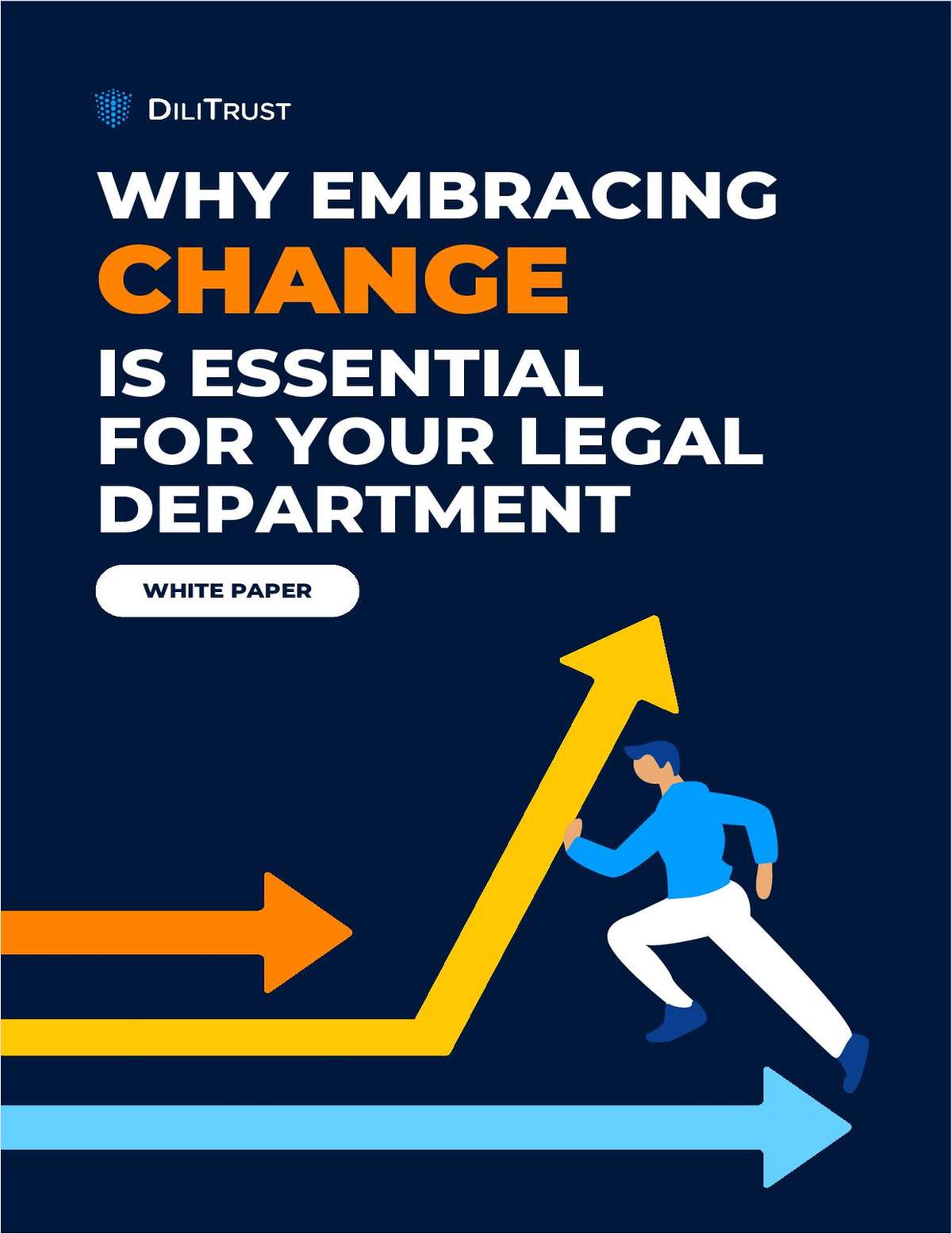Blockchain for the Advertising Industry
While inflated expectations abound, the advertising industry is emerging as one of the more immediate, substantive and compelling use cases for blockchain technology.
March 11, 2019 at 03:25 PM
13 minute read
This article appeared in Cybersecurity Law & Strategy, an ALM publication for privacy and security professionals, Chief Information Security Officers, Chief Information Officers, Chief Technology Officers, Corporate Counsel, Internet and Tech Practitioners, In-House Counsel. Visit the website to learn more.
There is a lot of excitement — and a lot of hype — around blockchain, the emerging technology that helped launch Bitcoin and that is now being touted as a potential solution to a myriad of business challenges across a wide spectrum of industries. While inflated expectations abound, the advertising industry is emerging as one of the more immediate, substantive and compelling use cases for blockchain technology. Use cases for the advertising industry may not seem as disruptive or obvious to those who are unfamiliar with the digital media market, but to advertising industry professionals, blockchain has even more transformative potential than it does in industries such as remittances, capital markets, food supply chain and government services. Unlike other industries, the real impact of blockchain on the advertising industry is likely to occur “behind the scenes” in ways that may very well go undetected by most consumers. In many respects, this can be taken as a sign that the use cases are more practical and real.
For those still struggling to understand what blockchain is, all you really need to know is that blockchain is a new type of database that brings together four key characteristics in a way that no other database has done before:
- Public-Private Key Cryptography enables enhanced data privacy/security.
- Distributed Networks increase network security and trust among parties.
- Data Immutability (via hashing) prevents tampering with records.
- Disintermediation allows us to “cut out the middleman” in data transfer.
By combining these four characteristics, blockchain enables new efficiencies in situations where multiple independent entities rely on, update and use the same dataset. These efficiencies may be realized in applications for currency, payments and capital markets — but all of these are highly regulated areas, where creating scalable new solutions will require overcoming many legal hurdles. In contrast, the advertising industry is far less regulated, making it a prime target for blockchain innovation.
|Digital Ad Data Management
There are three main use cases for blockchain in the advertising industry. The first is driving efficiencies in digital ad data management. While digital and mobile media have created immense opportunities for advertisers, this has come at the price of significantly increased complexity in tracking relevant data as a digital advertisement moves from an advertiser to a digital service provider (DSP) to an ad exchange/network; and then to a software service provider, a publisher, and finally to an online viewer. The current digital ad supply chain involves multiple independent entities with diverging incentives and varied legal relationships, and provides different levels of transparency into a fragmented and siloed set of information. Binary relationships govern most of the information exchange and product flow, with most parties having insight into only the steps immediately before and after their role in the chain. Transitioning to a blockchain-based system enables all parties involved to view the entire digital supply chain — all in real-time, and with a remarkably enhanced degree of trustworthiness and data integrity.
This greater transparency provides enormous benefits to all stakeholders. In the context of ad campaigns, blockchain provides a single source of truth for the number of impressions delivered, eliminating disputes between marketing platforms, publishers and advertisers. These disputes currently create millions of dollars of costs for all stakeholders involved. In the words of an executive from ABInBev: “In short, [blockchain is] helping solve the core issue of everyone agreeing what to pay each other ….”
ABInBev is one of several brand name firms that have launched blockchain pilots that seek to drive efficiencies in the digital ad supply chain. The world's largest producer and distributor of beer is partnering with a startup, Kiip, to write ad impression data to the Ethereum blockchain in hourly batches. The data will be made available in real-time to anyone holding the encryption key, including DSPs, ad agencies, and the ultimate client. The goal of the pilot is to decrease the amount of time media buyers spend sifting through impression-level data and increase transparency in ad programs to improve effectiveness.
A similar pilot involves a “micro-consortium” among IBM, the digital advertising firm Mediaocean, and major consumer products firms Kimberly-Clark, Kellogg's, and Unilever. The pilot leverages a custom version of IBM's enterprise grade blockchain, Hyperledger Fabric, to record impression level data as well as related transactional data such as purchase orders and payments. Ultimately, the pilot seeks to improve transparency into how media dollars are being spent, and how those dollars benefit various stakeholders involved in ad campaigns.
An even more ambitious project is being piloted by AdLedger, a new consortium that includes several industry players, including Salon Media, IPG Mediabrands, iSpot.tv, Tegna, Publicis Media, Mad Network, group m, and the International Advertising Bureau (IAB). The AdLedger consortium is teaming with IBM and leveraging the Hyperledger blockchain. In addition to tracking impression and other ad related data on Hyperledger, AdLedger will seek to run analytics on the blockchain dataset to measure key performance indicators (KPIs) that can be used to gain insights into ad campaign effectiveness. A final pilot of note is Comcast's recently announced Blockgraph, which leverages blockchain and advanced encryption techniques to enable a peer-to-peer platform for matching, managing and tracking TV ad data. Blockgraph recently completed a pilot and intends to go live in early 2019.
A critical subtext to each of the pilots mentioned above is the potential for blockchain to be used as a tool to combat fraud. Digital ad fraud is an enormous problem for the advertising industry, estimated to result in over $10 billion in annual losses. As solutions evolve for leveraging blockchain to enhance ad campaign transparency, opportunities may emerge to combat the bot-based click/impression fraud that has plagued the industry with increasing alarm over the past few years.
|Automated Payments
In addition to putting various stakeholders on the same page with regard to advertising data, a second key use case for blockchain involves the potential for automated payments enabled by smart contracts. Smart contracts create the ability to program computer logic into a blockchain platform, such that when one type of predefined transaction occurs, another type of predefined transaction automatically occurs. Smart contracts carry great potential to drive efficiencies in ad campaign compensation structures. For example, imagine if a business outlined its ad campaign objectives (e.g., reaching a certain number of impressions from a certain demographic in a defined period), and then offered automated payments via smart contracts once the objectives were met according to data written to a shared blockchain. This could give rise to an entirely new framework for the bidding and fulfillment of ad campaigns. Project Proton, a blockchain consortium spearheaded by Mindshare, has been a pioneer in this area, leveraging smart contracts to generate automatic payments for ads that meet criteria related to views, brand safety and fraud prevention.
While smart contracts payments offer enormous benefits, they also trigger concerns related to the current environment of SEC regulation in the U.S. Many ad industry pilots seeking to leverage smart contracts payments do so through Ethereum-based tokens that were issued in so called “initial coin offering” (ICO) events. The SEC has been clear that most (if not all) ICOs are illegal sales of unregistered securities, which obviously complicates pilots that utilize tokens issued in an ICO. A solution may come in the form of the recent trend of so called “stablecoins” — Ethereum based tokens that are backed 1:1 by U.S. dollars held in FDIC insured bank accounts. Although the legal status of stablecoins is still uncertain, these products may enable Ethereum-based payments automated by smart contracts where the payment value remains stable and where the token avoids regulatory complications. In addition to regulation, another hurdle involves the question of how to properly incentivize industry players to participate in a smart contracts platform. Like most blockchain enterprise applications, the advantages of smart contracts cannot be realized without a critical mass of platform participants.
|Loyalty Points Programs
A third and final use case for blockchain in the advertising industry concerns what could be the “next generation” of loyalty points programs. From the standpoint of a consumer, imagine loyalty points that are fully interchangeable across programs, stored and managed in the same digital wallet, and fully transferable between and among program participants. From the standpoint of a program provider, imagine loyalty points that are transacted on a fully transparent, real-time ledger that reduces fraud and loss and provides a comprehensive dataset which can be used to better analyze participant behavior and program effectiveness. This is the potential for blockchain use in loyalty point programs. Blockchain-based loyalty point programs are already being tested in a pilot led by Microsoft and Singapore airlines, with many more pilots sure to follow.
|Legal Issues for Blockchain Advertisiers
These new models for leveraging blockchain in the advertising industry bring with them novel legal issues that will require thoughtful solutions to ensure the benefits of blockchain are not derailed by regulatory or legal disputes. Some of the challenges we foresee involve issues of what data is accessible to what parties, the rights and responsibilities of various consortia members (including the rights to run data analytics or monetize blockchain-based data) and even thorny issues related to the personal data rights under new laws in California and the EU. Issues related to SEC regulations and money transmission may also raise obstacles.
Avoiding the legal pitfalls and realizing the value of blockchain solutions will require cross disciplinary legal analysis that accounts for various regulatory frameworks. In cases where blockchain solutions are shared among independent industry participants, success will also require new governance frameworks that take into account the new ways that advertising industry participants will engage each other as they come together to co-host blockchain solutions. Organizational structure, jurisdictional issues, assignment of risks and remedies, data privacy and security, and regulatory compliance are among the areas that will require careful legal planning to ensure ongoing success.
In-house counsel can prepare by understanding the legal implications of pilots that are underway and thinking through the optimal ways to engage future collaborators. As solutions for the digital ad supply chain emerge, in-house legal departments may benefit from building tailored legal frameworks for engaging partners under different scenarios, to include standalone pilots with technology firms, “micro-consortia” with small groups of collaborators, and larger consortia involving competitor firms and trade groups. Each of these new ways of collaborating will offer their own unique benefits and risks. For example, while larger consortia may drive economies of scale, the larger a consortium becomes, the more concerns it may raise under the FTC and DOJ's Antitrust Guidelines for Collaborations Among Competitors.
Understanding how the technology works — and where the technical vulnerabilities are — can also assist in-house attorneys in crafting legal solutions to account for technical risks. As smart contracts are implemented to automate transactions, in-house counsel should consider how those smart contracts might malfunction, and what the downstream effects may be on various participants in the blockchain solution. In some cases, traditional written contracts may assist in outlining remedies to protect against scenarios where a “smart contract” turns out to be not as smart as intended. And in the case of blockchain loyalty programs, careful technical analysis — sometimes combined with regulator engagement — may be required to avoid SEC regulations and properly mitigate risks related to money transmission.
|Conclusion
The challenges are real, but so are the opportunities. Beyond the hype of blockchain we see real potential to solve longstanding inefficiencies in the advertising industry and to launch new advertising models. While blockchain applications in the advertising industry may go unnoticed by many consumers of digital content, behind the scenes blockchain is well poised to capture industry value and ultimately improve the consumer experience.
*****
A partner at BakerHostetler and a former top lawyer at AOL and Resolution Health, Inc./Anthem, Inc., Laura Jehl focuses her practice on the intersection of law, data and emerging technologies. She is the founder and leader of the firm's national Blockchain Technologies and Digital Currencies team and advises clients on the rapidly evolving legal and regulatory issues that businesses experimenting with blockchain, artificial intelligence, IoT and digital identity solutions face on a daily basis.
BakerHostetler's Blockchain counsel, Robert A. Musiala Jr., is esteemed for his roles in the areas of cryptocurrency anti-money laundering/counter-terrorist financing, and concept development for blockchain-based solutions. Robert was a founding member of the blockchain practice at a “Big Four” accounting firm and one of the largest professional services firms in the world, where he was introduced to blockchain through his work as an intelligence analyst and financial crimes investigator.
Linda Goldstein, co-leader of BakerHostetler's Advertising, Marketing and Digital Media team, regularly provides advertising counsel and regulatory advice to leading Fortune 500 and Fortune 100 companies in many different product and service categories, including telecommunications, wireless, retailing, publishing, entertainment, digital media, gaming, food and beverage, and financial services. She represents clients in investigative and enforcement proceedings brought by the Federal Trade Commission, state attorneys general, district attorneys and other federal and state agencies with jurisdiction over advertising and marketing practices, and she has handled some of the highest-profile matters, setting industry precedents.
Fernando Bohorquez is a litigation partner who regularly advises and represents ad tech, civic tech and digital and social media companies on commercial, intellectual property, and business disputes. Currently the Litigation Group coordinator for BakerHostetler's New York office, Fernando has a deep knowledge and experience with all phases of civil litigation, managing large-scale cases in high-profile and high-pressure environments, as well as regulatory investigations and proceedings. Fernando is very involved in the New York startup community, counseling various early-stage companies and serves as a leading member of BakerHostetler's Emerging Company team.
Amy Ralph Mudge is co-leader of BakerHostetler's advertising marketing and digital media team. She routinely represents top-tier companies before the Federal Trade Commission (FTC), the National Advertising Division (NAD) and the Children's Advertising Review Unit (CARU), as well as in private, federal and state class action defense, consumer protection and antitrust litigation.
This content has been archived. It is available through our partners, LexisNexis® and Bloomberg Law.
To view this content, please continue to their sites.
Not a Lexis Subscriber?
Subscribe Now
Not a Bloomberg Law Subscriber?
Subscribe Now
NOT FOR REPRINT
© 2024 ALM Global, LLC, All Rights Reserved. Request academic re-use from www.copyright.com. All other uses, submit a request to [email protected]. For more information visit Asset & Logo Licensing.
You Might Like
View All
Legal Departments Gripe About Outside Counsel but Rarely Talk to Them
4 minute read
As Profits Rise, Law Firms Likely to Make More AI Investments in 2025

'Serious Disruptions'?: Federal Courts Brace for Government Shutdown Threat
3 minute read
'So Many Firms' Have Yet to Announce Associate Bonuses, Underlining Big Law's Uneven Approach
5 minute readTrending Stories
- 1Call for Nominations: Elite Trial Lawyers 2025
- 2Senate Judiciary Dems Release Report on Supreme Court Ethics
- 3Senate Confirms Last 2 of Biden's California Judicial Nominees
- 4Morrison & Foerster Doles Out Year-End and Special Bonuses, Raises Base Compensation for Associates
- 5Tom Girardi to Surrender to Federal Authorities on Jan. 7
Who Got The Work
Michael G. Bongiorno, Andrew Scott Dulberg and Elizabeth E. Driscoll from Wilmer Cutler Pickering Hale and Dorr have stepped in to represent Symbotic Inc., an A.I.-enabled technology platform that focuses on increasing supply chain efficiency, and other defendants in a pending shareholder derivative lawsuit. The case, filed Oct. 2 in Massachusetts District Court by the Brown Law Firm on behalf of Stephen Austen, accuses certain officers and directors of misleading investors in regard to Symbotic's potential for margin growth by failing to disclose that the company was not equipped to timely deploy its systems or manage expenses through project delays. The case, assigned to U.S. District Judge Nathaniel M. Gorton, is 1:24-cv-12522, Austen v. Cohen et al.
Who Got The Work
Edmund Polubinski and Marie Killmond of Davis Polk & Wardwell have entered appearances for data platform software development company MongoDB and other defendants in a pending shareholder derivative lawsuit. The action, filed Oct. 7 in New York Southern District Court by the Brown Law Firm, accuses the company's directors and/or officers of falsely expressing confidence in the company’s restructuring of its sales incentive plan and downplaying the severity of decreases in its upfront commitments. The case is 1:24-cv-07594, Roy v. Ittycheria et al.
Who Got The Work
Amy O. Bruchs and Kurt F. Ellison of Michael Best & Friedrich have entered appearances for Epic Systems Corp. in a pending employment discrimination lawsuit. The suit was filed Sept. 7 in Wisconsin Western District Court by Levine Eisberner LLC and Siri & Glimstad on behalf of a project manager who claims that he was wrongfully terminated after applying for a religious exemption to the defendant's COVID-19 vaccine mandate. The case, assigned to U.S. Magistrate Judge Anita Marie Boor, is 3:24-cv-00630, Secker, Nathan v. Epic Systems Corporation.
Who Got The Work
David X. Sullivan, Thomas J. Finn and Gregory A. Hall from McCarter & English have entered appearances for Sunrun Installation Services in a pending civil rights lawsuit. The complaint was filed Sept. 4 in Connecticut District Court by attorney Robert M. Berke on behalf of former employee George Edward Steins, who was arrested and charged with employing an unregistered home improvement salesperson. The complaint alleges that had Sunrun informed the Connecticut Department of Consumer Protection that the plaintiff's employment had ended in 2017 and that he no longer held Sunrun's home improvement contractor license, he would not have been hit with charges, which were dismissed in May 2024. The case, assigned to U.S. District Judge Jeffrey A. Meyer, is 3:24-cv-01423, Steins v. Sunrun, Inc. et al.
Who Got The Work
Greenberg Traurig shareholder Joshua L. Raskin has entered an appearance for boohoo.com UK Ltd. in a pending patent infringement lawsuit. The suit, filed Sept. 3 in Texas Eastern District Court by Rozier Hardt McDonough on behalf of Alto Dynamics, asserts five patents related to an online shopping platform. The case, assigned to U.S. District Judge Rodney Gilstrap, is 2:24-cv-00719, Alto Dynamics, LLC v. boohoo.com UK Limited.
Featured Firms
Law Offices of Gary Martin Hays & Associates, P.C.
(470) 294-1674
Law Offices of Mark E. Salomone
(857) 444-6468
Smith & Hassler
(713) 739-1250








